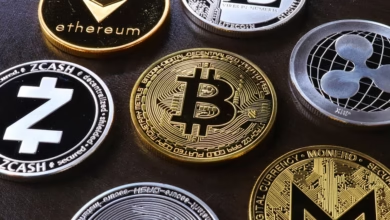Analyzing Global Gold Demand: Key Trends in Consumption, Investment, and Market Dynamics

In recent years, the global gold demand has experienced significant fluctuations, driven by various factors ranging from economic uncertainties to geopolitical tensions. As investors and industries alike seek refuge in gold, often referred to as a safe haven asset, understanding the trends in gold consumption across different countries and sectors becomes increasingly vital. This article delves into the multifaceted world of gold, highlighting key trends in consumption by country and industry, while examining the role of gold in investment portfolios. We will explore how factors such as inflation and geopolitical events impact gold prices, alongside emerging market trends like gold ETFs and sustainable gold mining practices. Whether you are a seasoned gold investor or new to the gold market, our analysis will provide valuable insights into the evolving landscape of gold demand, including gold jewelry, gold coins, and the burgeoning interest in gold technology. Join us as we navigate the intricate web of global gold trade, uncovering the dynamics that shape the gold market today.
- 1. Understanding Global Gold Demand: Key Trends in Consumption by Country and Industry
- 2. The Role of Gold as a Safe Haven Asset: How Geopolitical Factors Influence Gold Prices
- 3. Emerging Gold Market Trends: From Gold ETFs to Sustainable Gold Mining Practices
1. Understanding Global Gold Demand: Key Trends in Consumption by Country and Industry
Understanding global gold demand involves analyzing various trends in consumption across different countries and industries. Gold has long been viewed as a safe haven asset, particularly during times of economic uncertainty or inflation. As a result, many investors turn to gold investment to hedge against potential market downturns.
In 2023, China and India emerged as the leading consumers of gold, primarily driven by their cultural affinity for gold jewelry. The demand for gold jewelry in these countries not only reflects tradition but also represents a significant portion of the gold market trends. In contrast, Western countries have shown a growing interest in gold coins and bullion as investment vehicles, with gold ETFs and gold futures gaining popularity among institutional investors.
The industrial demand for gold is also noteworthy, particularly in technology sectors where gold is utilized for its conductive properties. Gold technology applications include electronics and renewable energy, which are expected to increase in the coming years. Additionally, sustainable gold mining practices are becoming essential as consumers demand environmentally responsible sourcing.
Central banks around the world are also stocking up on gold reserves, a trend that underscores the metal's enduring status as a reliable store of value. This increase in central bank gold purchases reflects concerns over the stability of fiat currencies, especially amid rising inflation rates. Gold refining and gold recycling have become important aspects of the gold market analysis, as they provide a means to meet the growing demand without necessarily increasing gold production.
However, the gold trade is not without its challenges. Issues such as gold smuggling and unethical sourcing practices can undermine the integrity of the gold market. As the demand for luxury gold items grows, it is crucial for consumers to remain informed about the origins of their gold purchases, including whether they are investing in gold coins or collectibles that adhere to ethical standards.
In summary, global gold demand is shaped by a complex interplay of cultural, technological, and economic factors. As the landscape of gold consumption evolves, understanding these trends will be vital for investors, manufacturers, and policymakers alike.
2. The Role of Gold as a Safe Haven Asset: How Geopolitical Factors Influence Gold Prices
Gold has long been regarded as a safe haven asset, providing investors with a reliable store of value during times of economic uncertainty and geopolitical turmoil. The relationship between gold prices and geopolitical factors is complex but significant. When tensions arise—whether due to political instability, military conflicts, or economic crises—demand for gold typically surges, leading to increased investment in gold bullion, gold coins, and gold ETFs.
Central banks often bolster their gold reserves during such periods, viewing gold as a hedge against currency fluctuations and inflation. For instance, as global inflation rates rise, many investors turn to gold to protect their wealth, reinforcing its role as a safeguard against economic instability. This trend is evident in the gold market analysis, which frequently highlights spikes in gold prices correlating with geopolitical events.
Moreover, gold mining and production can be significantly affected by these geopolitical factors. Regions rich in gold, such as parts of Africa and South America, often face political instability that can disrupt gold mining operations. This disruption can lead to decreased gold supply, further driving up gold prices. Additionally, gold smuggling can arise in regions where conflicts or heavy regulations are present, creating a shadow market that complicates the gold trade.
The advent of new technologies has also influenced how gold is perceived in the investment landscape. For example, the emergence of gold futures and the integration of cryptocurrencies into the investment portfolio have reshaped the dynamics of gold investment. While some investors view gold as a traditional safe haven, others consider it alongside digital assets, creating a new paradigm in asset allocation.
In conclusion, the role of gold as a safe haven asset is intricately tied to geopolitical factors. As global tensions fluctuate, so too do gold market trends, impacting everything from gold production and refining to the consumption of gold jewelry and collectibles. Investors must remain vigilant, understanding that gold's historical significance as a secure investment continues to hold true in today’s volatile global landscape.
3. Emerging Gold Market Trends: From Gold ETFs to Sustainable Gold Mining Practices
As the global gold demand continues to evolve, several emerging trends are shaping the landscape of the gold market. One of the most significant developments is the rise of gold ETFs (Exchange-Traded Funds), which have transformed how investors approach gold investment. These financial instruments allow investors to gain exposure to gold prices without the need to physically own gold bullion or coins, making gold investing more accessible. As seen in recent market analysis, the popularity of gold ETFs has surged, especially during periods of economic uncertainty, as they are viewed as a safe haven asset against inflation and market volatility.
Another noteworthy trend is the growing emphasis on sustainable gold mining practices. With rising awareness about environmental and social issues, consumers and investors are increasingly seeking gold sourced from responsible mining operations. This shift not only helps mitigate the negative impacts of gold mining on local communities and ecosystems but also enhances the value of luxury gold products, such as gold jewelry and gold collectibles. Sustainable gold mining initiatives are gaining traction, with companies adopting eco-friendly refining processes and engaging in gold recycling programs to minimize waste and promote circular economy practices.
Additionally, the integration of technology in the gold sector is influencing production and trading. Innovations in gold refining and mining technology are improving efficiency and reducing costs, which can impact gold prices and overall gold production levels. Furthermore, the intersection of gold and cryptocurrency is creating new opportunities for investors. The rise of digital assets has prompted discussions about the future of gold as a store of value, leading some to invest in gold futures or physical gold as a hedge against potential market fluctuations.
In summary, the gold market is witnessing a transformative phase characterized by the rise of gold ETFs, a commitment to sustainable gold mining practices, and the incorporation of technology. As these trends continue to develop, they will play a crucial role in shaping global gold demand and influencing investment strategies in the years to come.
In conclusion, understanding global gold demand reveals significant insights into consumption patterns across various countries and industries. As we have explored, gold remains a vital safe haven asset, particularly in times of geopolitical uncertainty and economic fluctuations. The influence of factors such as gold prices, inflation, and central banks' gold reserves continues to shape market dynamics, making gold investment a strategic choice for many.
Emerging trends, including the rise of gold ETFs and sustainable gold mining practices, highlight the evolving landscape of the gold market. With increasing interest in gold technology and recycling, the industry is adapting to modern demands while addressing environmental concerns. Moreover, the intersection of gold and cryptocurrency is reshaping investment strategies, as more investors view gold as a hedge against market volatility.
As we look ahead, the gold market remains a complex but fascinating arena, with gold production, refining, and trade playing critical roles in shaping its future. Whether through physical gold, gold bullion, or gold coins investing, the allure of gold persists as a symbol of wealth and stability. The ongoing exploration of luxury gold, gold collectibles, and the implications of gold smuggling further emphasizes the need for comprehensive gold market analysis. Ultimately, staying informed about these trends will empower investors to navigate the intricate world of global gold demand effectively.
References
– [Insert relevant sources here with APA citations]





